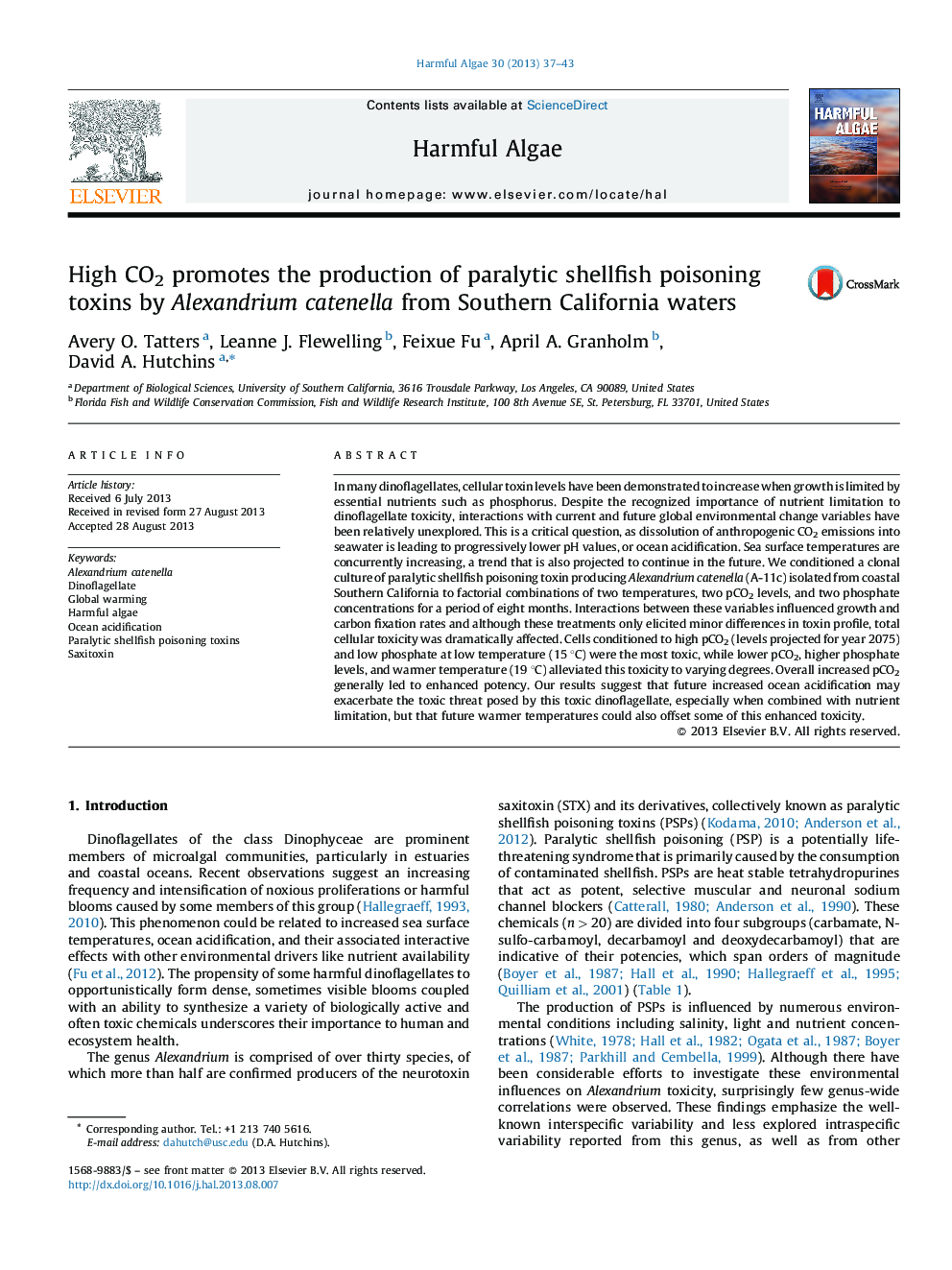| کد مقاله | کد نشریه | سال انتشار | مقاله انگلیسی | نسخه تمام متن |
|---|---|---|---|---|
| 4545413 | 1626941 | 2013 | 7 صفحه PDF | دانلود رایگان |

• Conditioning of a clonal culture of Alexandrium catenella to a factorial combination of environmental change variables; CO2, temperature, phosphorus.
• Measurements of growth and cellular toxins after eight months of conditioning.
• Increased CO2 led to enhanced cellular toxicity.
• Combined high CO2, low temperature and phosphate-limitation were the ‘most toxic’.
In many dinoflagellates, cellular toxin levels have been demonstrated to increase when growth is limited by essential nutrients such as phosphorus. Despite the recognized importance of nutrient limitation to dinoflagellate toxicity, interactions with current and future global environmental change variables have been relatively unexplored. This is a critical question, as dissolution of anthropogenic CO2 emissions into seawater is leading to progressively lower pH values, or ocean acidification. Sea surface temperatures are concurrently increasing, a trend that is also projected to continue in the future. We conditioned a clonal culture of paralytic shellfish poisoning toxin producing Alexandrium catenella (A-11c) isolated from coastal Southern California to factorial combinations of two temperatures, two pCO2 levels, and two phosphate concentrations for a period of eight months. Interactions between these variables influenced growth and carbon fixation rates and although these treatments only elicited minor differences in toxin profile, total cellular toxicity was dramatically affected. Cells conditioned to high pCO2 (levels projected for year 2075) and low phosphate at low temperature (15 °C) were the most toxic, while lower pCO2, higher phosphate levels, and warmer temperature (19 °C) alleviated this toxicity to varying degrees. Overall increased pCO2 generally led to enhanced potency. Our results suggest that future increased ocean acidification may exacerbate the toxic threat posed by this toxic dinoflagellate, especially when combined with nutrient limitation, but that future warmer temperatures could also offset some of this enhanced toxicity.
Journal: Harmful Algae - Volume 30, December 2013, Pages 37–43